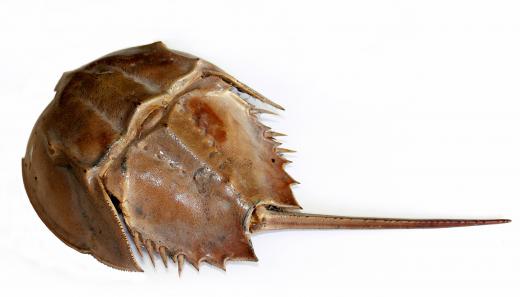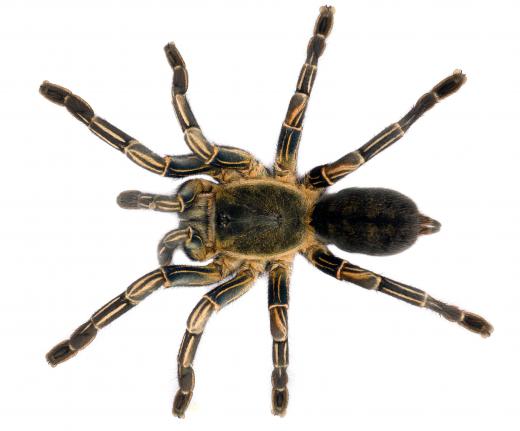What are Chelicerates?
 Michael Anissimov
Michael Anissimov
Chelicerates, also called subphylum Chelicerata, are a major subphylum of phylum Arthropoda, a.k.a. arthropods, the largest phylum in the animal kingdom, with over a million species recognized by science. Chelicerata includes somewhere between 10% and 30% of all arthropod species: mostly because mites are chelicerates, and the total estimated number of mite species is enormous, in the hundreds of thousands, perhaps even exceeding a million.
Chelicerates are named for their chelicerae, specialized appendages used for feeding and manipulating food, in lieu of the chewing mandibles employed by other arthopod subphyla, such as Hexapoda (which includes insects). There are five major classes of chelicerates: Arachnida (spiders, scorpions, mites, etc.), Xiphosura (horseshoe crabs), Eurypterida (sea scorpions), Chasmataspidida (chasmataspids), and Pycnogonida (sea spiders). Of these, Eurypterida and Chasmataspidida are extinct, and Xiphosura, the horseshoe crab -- considered a "living fossil" -- consists of only four species.

That leaves just the arachnids and sea spiders. Arachnids are a famous, primarily terrestrial, and hugely diverse group, consisting of more than 110,000 described species and an estimated total exceeding a million, while sea spiders are an unusual group of marine chelicerates that numbers only 1300 species. Sea spiders are usually small, around 1 cm in width, although some of the largest deep-water specimens may be as large as 9 cm (3.5 in).

The largest and most successful of the chelicerates, by far, are the arachnids. When you hear the word "arachnid," spiders immediately leap to mind, and indeed, spiders are the most numerous arachnid, if only described species are counted. About 40,000 spider species have been identified, out of a total of 110,000 arachnids known to science. However, it is likely that another arachnid group -- ticks and mites -- are actually the most numerous, but because of their small size, have yet to be adequately classified. Different species of mite may have few external differences, requiring comparisons between DNA sequences to verify the distinct species. This massive project has only just begun.
Other arachnid groups include cave spiders (not actually spiders), harvestmen (daddy long-legs), whip scorpions, scorpions, solifugae and the tiny (<5 cm) pseudoscorpions, microwhip scorpions, hooded tickspiders, schizomids, and three extinct groups which only appear briefly in the fossil record.
AS FEATURED ON:
AS FEATURED ON:












Discuss this Article
Post your comments